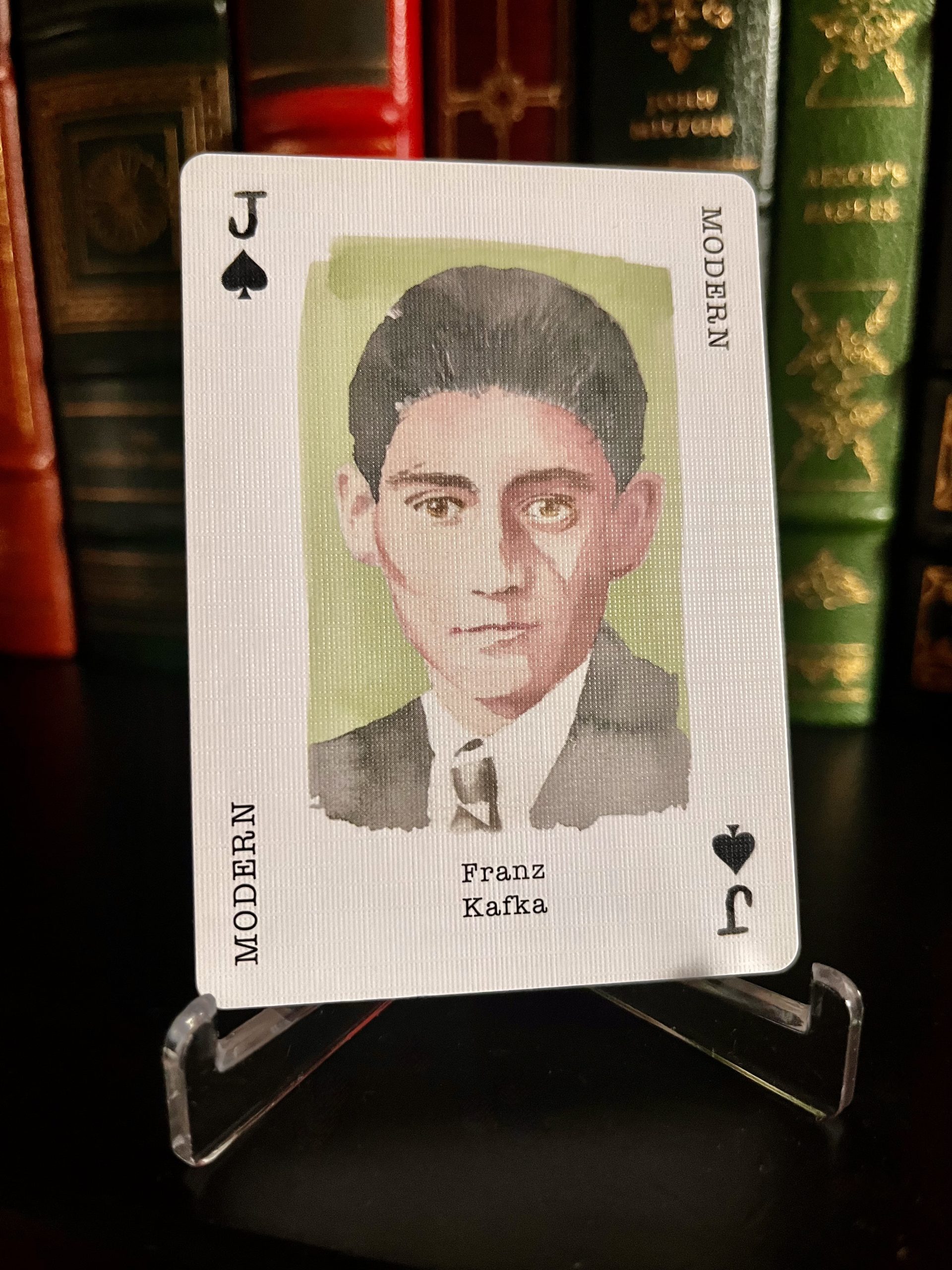essays
How Should You Order A Short Story Collection?

The first story in a short story collection should do two things:
1) Open strong to establish the writer’s authority
2) Prepare the reader for the rest of the collection
“The Sisters,” in James Joyce’s Dubliners, excels at both of these criteria. A young boy, watching from the dark street, tries to figure out whether an old priest is dead or not, based on the number of candles lit in a bedroom window. “Every night as I gazed up,” the narrator says, “I said softly to myself the word paralysis.”
As an opener, “The Sisters” does a couple of important things quickly. It establishes the narrative world as an ominous and oppressive place, and puts the narrator (and by extension the reader) in a state of overwhelmed inaction. In the spirit of T.S. Eliot’s Prufrock, we’re “like a patient etherized upon a table.” The story also introduces the stakes that will largely reign over the entire collection: the tension between the dullness of this existence and fear of any other, between staying and leaving, between sense and nonsense in life and death.
Sequencing a short story collection is pretty analogous to sequencing an album or a mix tape. The process largely depends on the balance between familiarity and change, of fulfilling the reader’s desires, while also challenging them. Flannery O’Connor’s A Good Man Is Hard To Find opens with a story about a serial killer, and transitions to a piece about a young boy’s river baptism. Miranda July’s No One Belongs Here More Than You begins with a love-fantasy on an apartment patio, followed by swim lessons in Belvedere, a middle-of-nowhere, pool-less town. Sequencing a story collection depends on mixing it up to keep things interesting, but not moving at a speed or in a manner that the reader can’t follow. This is how John Cusack’s character describes compilation-tape-making in the final scene of High Fidelity: “You gotta kick it off with a killer to grab attention. Then you gotta take it up a notch, but you don’t want to blow your wad. So, then you gotta cool it off a notch. There are a lot of rules…”
“The Lost Order,” the first story in Rivka Galchen’s 2014 collection American Innovations, shines as an opener in how effectively it establishes the collection’s narrative sensibility. The narrator in the story, after a stretch of unemployment, can’t start or finish anything, and has shifted her attention to not doing things. “I was at home, not making spaghetti,” she says. “I decided to not surf the internet. Then not to watch a television show.” A man calls with the wrong number and orders garlic chicken. He asks how long the wait will be; she gets flustered and says, “Thirty minutes?”
I had been reading most of the stories that eventually made up American Innovations as they were published, starting in 2008. Around that time, Galchen came to my college and read a frenzied, genre-bending story about time travel. I loved it. I read her first novel and I loved that, too. But when her stories appeared in The New Yorker and Harper’s, I tended to feel disappointed. I had a hard time finding their rhythm. I didn’t feel like I recognized her narrators, who behaved in ways that were at once ingratiating and infuriating.
Then the stories were released as a book and taken together, I understood them. “The Lost Order” effectively launches the sense of mental drifting that pervades over the entire collection. In one story, the narrator spends an hour and a half in a grocery store, not touching anything, pretending to be a ghost. In another, the narrator’s husband starts a blog about all the things he can’t stand about her. In the final story, the narrator’s furniture climbs out of her apartment window, away from her. The strange psychological trajectory that threads the collection together starts in that first story; the narrator hangs up the phone and obsesses over the chicken she accidentally promised to deliver. She notices it’s 11 AM and decides she better get dressed.
Scott McClanahan, a writer from West Virginia, is a contemporary master at story sequencing. McClanahan pays incredible attention to rhythm and musicality in his prose. He does the same thing in his performance: at his public readings, he whispers, shouts, and sings along to his audio tape recorder. The stories in his collections bleed and blend together. They start halfway through, and stop unexpectedly. Sometimes his stories have “second endings.” Sometimes they have the same titles, and continue where the last one left off. Especially in his most recent books — Crapalachia and Hill William — his stories crescendo, build toward twisted epiphanies, and then do it again. McClanahan’s books are fluid, brief, and conducive to a single feverish sitting.
Dorthe Nors’ Karate Chop, a recent translation from Denmark, is well-sequenced probably in large part because it emerged from the same burst of creative energy: Norse wrote the short collection in two weeks, while by herself in a cabin on the west coast of Denmark, and a hard-hitting yet tender sensibility anchors the fifteen tremendous stories. George Saunders’ books, meanwhile, are moored by his droll aw-shucksness, something that’s totally recognizable because there was a time when it was entirely unique. His books hang together, though. His whole catalog does.
Linked novels, or story cycles, seem to inherently have an easier time of story sequencing. The Things They Carried follows the same platoon of soldiers during and after Vietnam. Winesburg, Ohio, all takes place in its title town. In Olive Kittredge, Olive appears somewhere in every story. Sometimes she’s the narrator. Sometimes she’s just passing by. These books have continuity on the level of characters and place.
There are other short story collections that have an anchoring sensibility or perspective — any of Scott McClanahan’s books, for example — that might also be labeled linked novels. While a narrator is only sometimes named in Jesus’ Son, it’s presumable that all of the stories likely follow the same person, a drug addict nicknamed “Fuckhead”. In both of Junot Diaz’s collections, Drown and This Is How You Lose Her, Yunior narrates many of the stories. By strategically taking advantage of opportunities for continuity, these writers build rhythm on the level of the character, place and world-view, all of which adds up to a book that feels larger than the sum of its parts.
Collections suffer without a good strategy for organizing the content. The annual Best American Series — Best American Short Stories, Essays, Poems, etc. — for example, commits the story-sequencing sin of organizing its content by author last name. Neither the annual O. Henry Prize nor the Pushcart Prize series use this technique. Some Norton Anthologies do. When I read the annual Best American Short Stories, I always find it to be full of great stuff, but the collection struggles with rhythm. The 2014 story anthology, for example, opens with a piece by Charles Baxter that switches its narrative method and reveals a new narrator about halfway through. This might be a refreshing move once the reader has settled into the tempo of the collection, but it’s a jarring way to begin.
In the 2013 BASS, George Saunders and Jim Shepard appear immediately alongside each other, each with very long stories written in the form of diaries (“The Semplica-Girl Diaries” and “The World to Come,” respectively). If strategically distributed across the book, the stories might be able to engage in a dialogue, which could be an anthology highlight. With the stories right next to each other, the technique feels frustratingly redundant.
Book-size successes in story collections — a unified sensibility, an aesthetic wholeness, a desire in the reader to read more books by this writer — emerge from the innumerable interacting choices made in the process of writing. Story decisions are tangled together in ways that make it important for the writer to consider — when laying down a word, a scene, a story — how each piece interacts with everything that surrounds it. As Gary Lutz observes in his essay, “The Sentence Is A Lonely Place”: “words must be situated in relation to others to produce an enduring effect on a reader…there needs to be an intimacy between the words, a togetherness that has nothing to do with grammar or syntax but instead has to do with the very shapes and sounds, the forms and contours, of the gathered words.”
The same things can be said about sequencing a short story collection: each piece — linked or not — works in orchestration with the others to build a cumulative effect. Dubliners ends with Joyce’s most famous story, “The Dead.” In the final scene, Gabriel, unable to sleep, stares out his hotel window at the street. The collection begins out on the street, looking in; it ends inside, looking out. But we’re still paralyzed, still watching in fear and wonder. Joyce writes, “His soul swooned slowly as he heard the snow falling faintly through the universe and faintly falling, like the descent of their last end, upon all the living and the dead.”
Some stories are openers. Some provide ballast in the middle. Different stories help writers pursue all sorts of different internal rhythms as they arise. “The Dead,” though, in all its rich and climactic melancholy, is a definitive closer.









